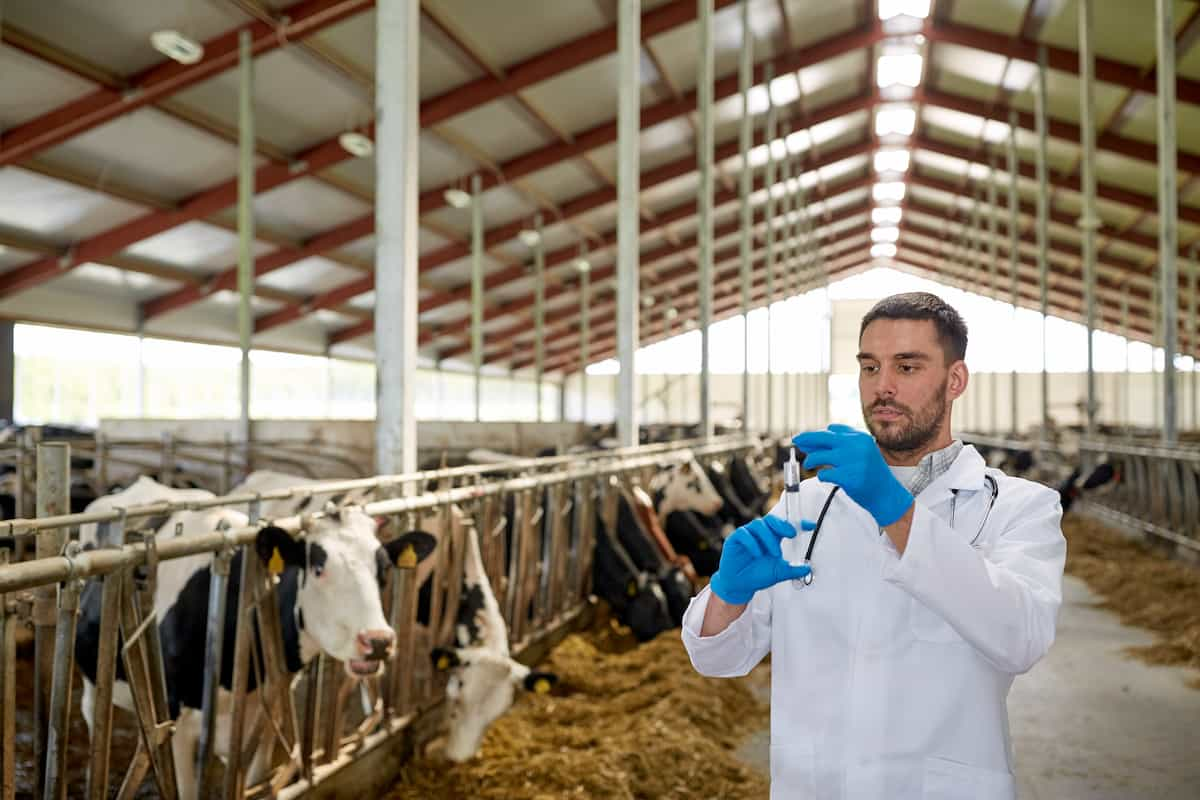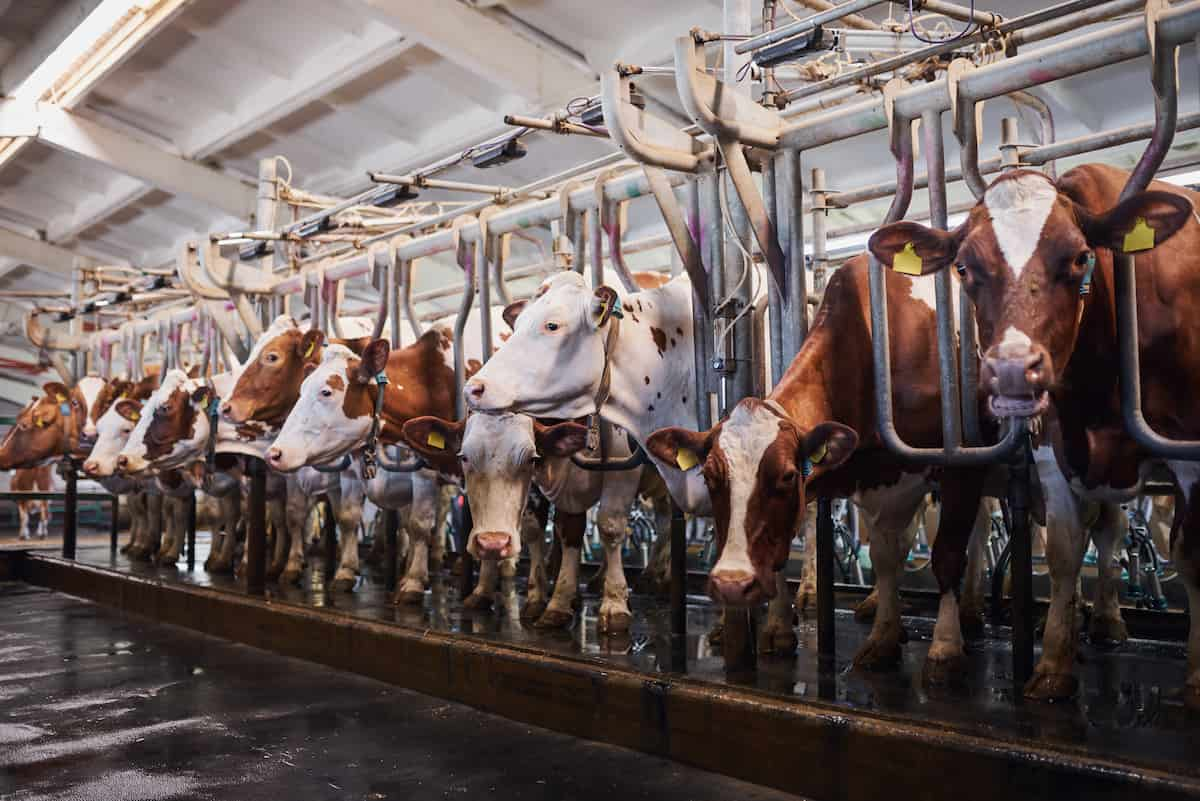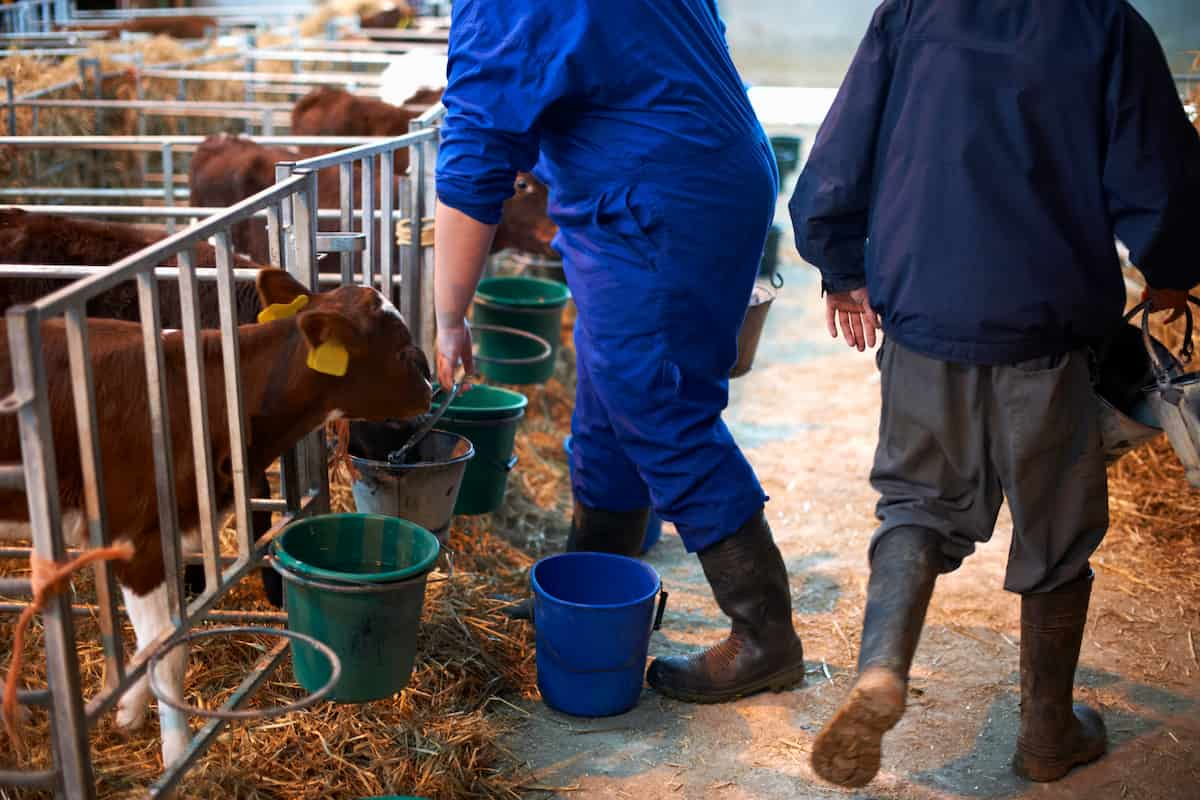Cattle farming is a crucial part of the agricultural industry, providing meat, milk, and other dairy products. However, like all animals, cattle are susceptible to diseases that can cause significant economic losses and even lead to animal deaths. Therefore, cattle farmers must know the most common diseases and their symptoms, causes, preventions, and control measures. Below we learn the common diseases in cattle, common cattle diseases and symptoms, and prevention and control of cattle diseases.

Top 10 Cattle Diseases
Bovine Respiratory Disease (BRD)
- Symptoms: Coughing, nasal discharge, fever, and rapid breathing.
- Causes: Bacterial or viral infections, stress, and poor ventilation.
- Prevention/Control: Vaccination, proper nutrition, reducing stress, and improving ventilation.
Foot and Mouth Disease (FMD)
- Symptoms: Blister-like lesions on the mouth, feet, and udder.
- Causes: A highly contagious viral infection.
- Prevention/Control: Strict quarantine measures, vaccination, and controlling the movement of animals.
Bovine Viral Diarrhea (BVD)
- Symptoms: Diarrhea, fever, respiratory problems, and reduced milk production.
- Causes: A viral infection transmitted through bodily fluids.
- Prevention/Control: Vaccination, testing, and biosecurity measures.
Johne’s Disease
- Symptoms: Chronic diarrhea, weight loss, and decreased milk production.
- Causes: A bacterial infection that affects the intestines.
- Prevention/Control: Testing, culling infected animals, and maintaining good hygiene and biosecurity practices.
Blackleg
- Symptoms: Sudden death, fever, and lameness.
- Causes: A bacterial infection that causes muscle necrosis.
- Prevention/Control: Vaccination, prompt antibiotic treatment, and disposal of infected carcasses properly.
Infectious Bovine Keratoconjunctivitis (IBK)
- Symptoms: Eye discharge, inflammation, and ulceration of the cornea.
- Causes: A bacterial infection (Moraxella bovis).
- Prevention/Control: Vaccination, fly control and avoiding overcrowding.
Leptospirosis
- Symptoms: Fever, reduced milk production, and jaundice.
- Causes: A bacterial infection that is transmitted through contaminated urine.
- Prevention/Control: Vaccination, rodent control, and proper disposal of aborted fetuses.
Lumpy Skin Disease (LSD)
- Symptoms: Skin nodules, fever, and reduced milk production.
- Causes: A viral infection transmitted by insects.
- Prevention/Control: Vaccination, controlling the movement of animals, and insect control.
In case you missed it: Top 10 Quail Diseases: Symptoms, Causes, Preventions, and Control

Malignant Catarrhal Fever (MCF)
- Symptoms: High fever, respiratory distress, and oral lesions.
- Causes: A viral infection transmitted by domestic sheep or wild ruminants.
- Prevention/Control: Separating cattle from sheep, vaccination, and strict biosecurity measures.
Anaplasmosis
- Symptoms: Anemia, fever, and weight loss.
- Causes: A bacterial infection transmitted by ticks.
- Prevention/Control: Tick control, testing, and treatment with antibiotics.
Frequently Asked Questions About Cattle Diseases
What are the Symptoms of Cattle Diseases?
Cattle can be affected by various diseases, and the symptoms can vary depending on the type of disease and the severity of the infection. However, there are some common signs and symptoms that farmers and ranchers should be aware of to detect early signs of diseases in their cattle.
One of the most noticeable symptoms of cattle diseases is a change in their behavior or habits. Sick cattle may become lethargic, lose their appetite, and lack interest in their surroundings. They may also be separated from the herd, stand or lie down for prolonged periods, or show signs of restlessness or aggression.
In addition to behavioral changes, physical symptoms can also indicate disease in cattle. These can include a high fever, rapid breathing, nasal or eye discharge, coughing, or diarrhea. Some diseases may also cause visible lesions or wounds on the skin or mucous membranes, such as abscesses, ulcers, or blisters. Farmers and ranchers should monitor their cattle closely and seek veterinary attention if they observe any of these symptoms or suspect a disease outbreak in their herd.
What are the Common Diseases in cattle?
Cattle are susceptible to many diseases, some of which can have serious health and economic consequences. Some of the most common diseases in cattle include respiratory diseases, such as pneumonia and shipping fever, which can be caused by viral or bacterial infections and are often associated with stress, overcrowding, and poor ventilation.
Other common diseases include digestive disorders, such as bloat and rumen acidosis, which can be caused by improper feeding, consumption of toxic plants, or changes in diet. Additionally, reproductive disorders, such as infertility and dystocia, can also affect cattle and can be caused by various factors, including infectious agents, nutritional deficiencies, and genetic abnormalities.
Preventing and controlling these diseases requires a comprehensive approach that includes good management practices, biosecurity measures, vaccination programs, and prompt treatment of sick animals. Farmers and ranchers can help minimize the risk of disease and ensure the health and productivity of their cattle by taking a proactive approach to herd health.
How Can We Prevent Cattle Diseases?
Preventing cattle diseases is essential to ensure healthy and productive herds, which is important for the agricultural industry and the economy. Regular vaccinations are among the most effective ways to prevent cattle diseases. Vaccines can protect cattle from various diseases, including infectious diseases like blackleg, respiratory diseases like bovine respiratory disease, and reproductive diseases like brucellosis. Farmers can minimize the risk of disease outbreaks by regularly vaccinating cattle and ensuring their animals are healthy and productive.
Another important step in preventing cattle diseases is maintaining a clean and hygienic environment for the animals. This includes ensuring that the housing and feeding areas are clean and free from manure and other waste, providing clean water sources, and ensuring proper ventilation to prevent moisture and bacteria buildup. It is also essential to practice good biosecurity measures to prevent the introduction of diseases into the herd.
In case you missed it: Top 10 Fish Diseases: Symptoms, Causes, Preventions, and Control

This can involve screening new animals before introducing them to the herd, limiting visitor access to the farm, and disinfecting equipment and vehicles that come in contact with them. Farmers can help protect their cattle from disease by implementing these preventative measures and promoting a healthy and sustainable agricultural industry.
Conclusion
In conclusion, cattle diseases can significantly impact the health and productivity of cattle, as well as the livelihoods of farmers and ranchers. Early detection and proper management are crucial in preventing and controlling these diseases. Farmers and ranchers should know the symptoms, causes, and risk factors associated with the top cattle diseases and implement effective prevention and control measures, such as proper nutrition, vaccination, biosecurity, and quarantine.
By working closely with veterinarians and following best management practices, farmers and ranchers can help ensure the health and well-being of their cattle and maintain a sustainable and profitable livestock operation.
- Feed Your Flock for Less: Top 10 Tips to Save on Chicken Feed
- Ultimate Guide to Ossabaw Island Hog: Breeding, Raising, Diet, and Care
- Hatching Answers: The Top 10 Reasons Your Chickens Aren’t Laying Eggs
- Eggs and Economics: Breaking Down the Cost of Raising Backyard Chickens
- Defend Your Greens: Proven Methods to Keep Iguanas Out of Your Garden
- Ultimate Guide to Cinnamon Queen Chicken: A Comprehensive Guide for Beginners
- Ultimate Guide to California Tan Chicken: Breeding, Raising, Diet, Egg-Production and Care
- Ultimate Guide to Marsh Daisy Chicken: Breeding, Raising, Diet, and Care
- 10 Types of Chicken Farming Businesses You Can Start for Profits